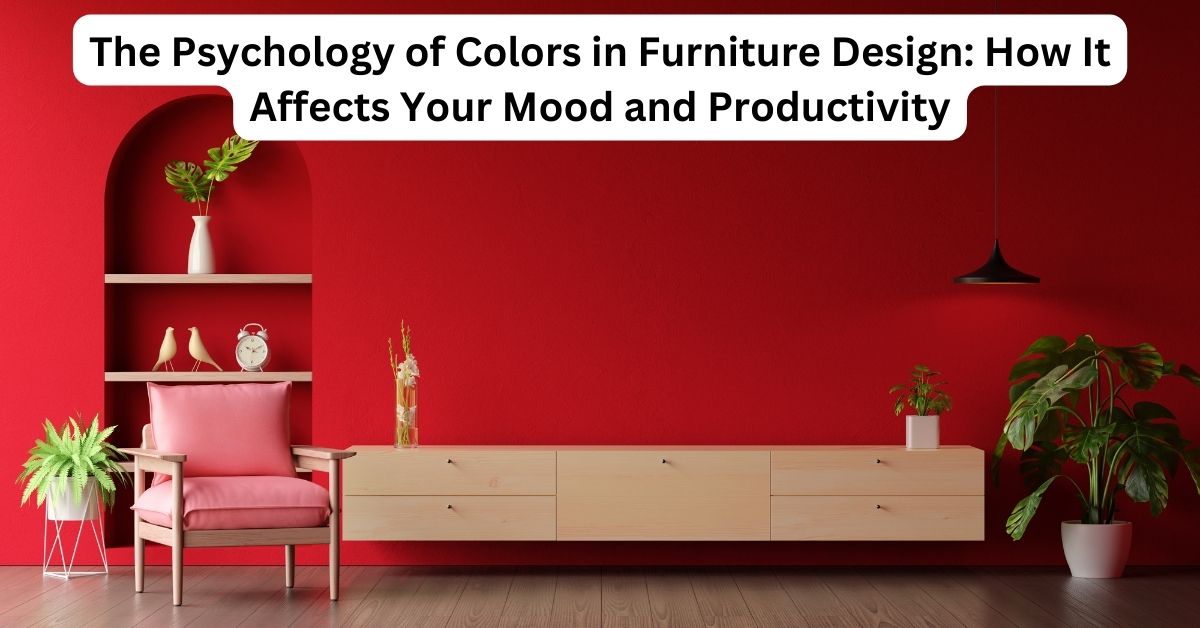Uncategorized
The Psychology of Colors in Furniture Design: How It Affects Your Mood and Productivity
The furniture color is an essential element in interior design and can significantly influence our mood and productivity. Furniture design, in particular, relies heavily on color to create an appealing and functional living space. From bold and bright hues to soft and muted tones, color can transform a room and create a specific ambiance.
As a designer or homeowner, understanding the psychology of color is critical when selecting colors for furniture. In this blog post, we’ll explore how color in furniture design can affect your mood and productivity.
Color and Emotions
Color has been shown to have a direct impact on emotions, and as a result, it can influence mood and behavior. For example, warm colors like red, orange, and yellow are associated with happiness, energy, and excitement. These colors are often used in social spaces like living rooms and dining rooms to create a vibrant and welcoming atmosphere.
On the other hand, colors in interior design like blue, green, and purple are associated with calmness, relaxation, and tranquility. These colors are often used in bedrooms and bathrooms to create a peaceful and soothing environment.
Neutrals like white, black, gray, and beige are versatile and can be used in a variety of settings. These colors are associated with simplicity, elegance, and sophistication. They are often used in minimalist design or as a backdrop to bold and bright accent colors.
When selecting furniture color furniture, it’s essential to consider the emotions and moods associated with different colors. For example, if you want to create an energizing living space, you may want to consider bold and bright hues like red or orange. If you want to create a peaceful bedroom, you may want to consider soft and muted blues or greens.
Color and Productivity
In addition to affecting emotions and moods, color in interior design can also affect productivity. When it comes to furniture design, the colors you choose can impact how productive you are in that space. For example, bright and bold colors can stimulate creativity and productivity, while soft and muted colors can encourage relaxation and focus.
Green is a furniture colour that’s often associated with productivity and focus. It’s believed to improve concentration and reduce eye strain, making it an ideal color for home offices and workspaces. Blue is another color that’s been shown to improve productivity, particularly in jobs that require mental focus and attention to detail.
Yellow is a bright and energizing furniture colour that can stimulate creativity and inspire new ideas. It’s often used in design studios and creative spaces to encourage brainstorming and innovation. Red is a bold and intense color that can increase energy and stimulate productivity. However, it’s important to use red sparingly, as too much red can be overwhelming and cause anxiety.
Color and Furniture Design
When it comes to furniture design, color is one of the most critical elements to consider. The color of furniture can significantly impact the overall look and feel of a room. For example, a bright red sofa can make a bold statement in a living room, while a soft gray sofa can create a calm and sophisticated ambiance.
When selecting furniture colors, it’s essential to consider the style and function of the space. For example, if you’re designing a minimalist living room, you may want to consider a neutral sofa in beige or gray. If you’re designing a cozy reading nook, you may want to consider a soft and muted armchair in a warm color like brown or rust.
Designer furniture is an excellent option for those who want to incorporate unique and eye-catching colors into their living space. Designer furniture often features bold and vibrant hues that can make a statement and add personality to a room. For example, a bright yellow designer armchair can add a pop of color to a neutral living room, while a bold red designer sofa can create a focal point in a modern space.
Conclusion
In conclusion, color furniture is an essential element in furniture design and can significantly impact our mood and productivity in space. Understanding the psychology of color is crucial when selecting colors for furniture, as different colors can evoke different emotions and affect productivity levels. When selecting furniture colors, it’s important to consider the style and function of the space, as well as the emotions and moods associated with different colors. Designer furniture is a great way to incorporate unique and eye-catching colors into a living space and can make a bold statement while adding personality to a room.
By considering the psychology of color in furniture design, you can create a functional and appealing living space that promotes productivity and enhances your overall well-being.

